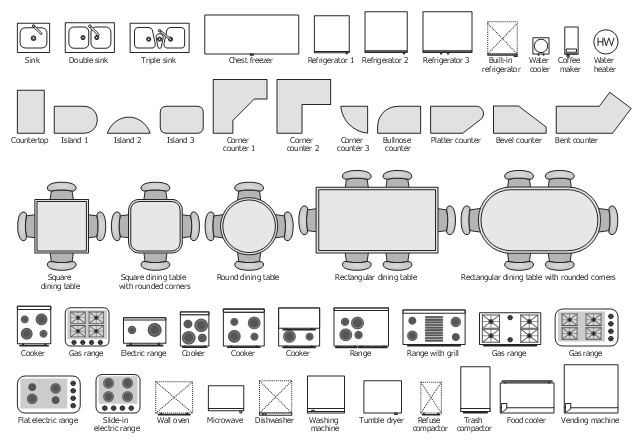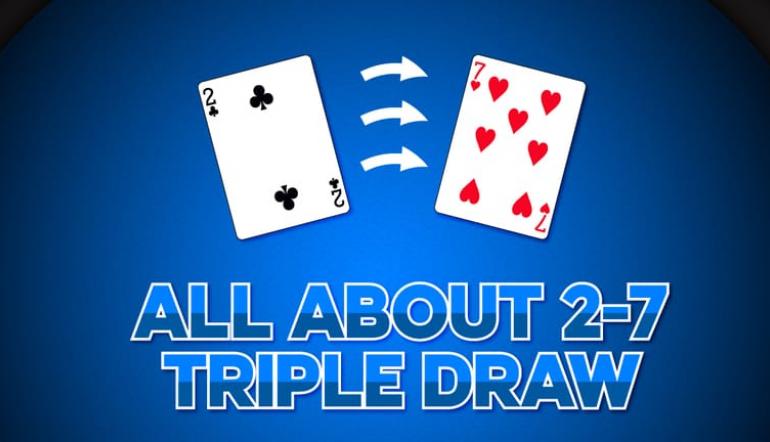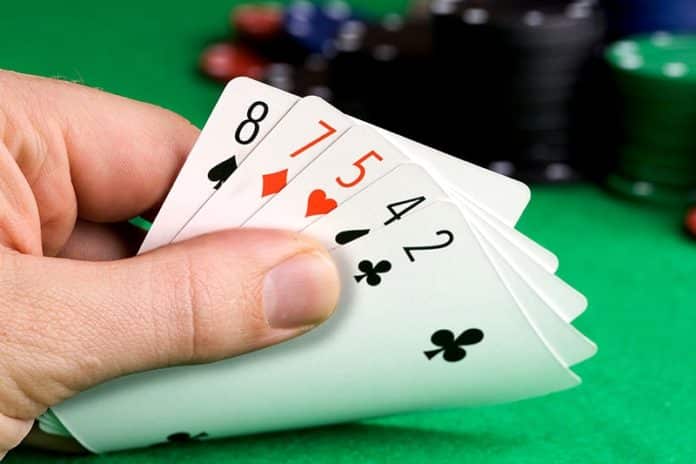2 7 Lowball Triple Draw

2-7 (Deuce to Seven) Triple Draw. 2-7 (Deuce to Seven) Triple Draw Lowball is a poker game in which the low poker hand wins the pot at showdown. In other words, it is a form of ‘Lowball’. 2-7 Triple Draw Lowball is a unique and interesting variation of the game of poker where players are attempting to get the best low hand. This is unlike other variations where the objective is to have the best high hand to win. 2-7 Triple Draw, like Texas Hold ’em is what is known in the poker world as a blind game. 2-7 Triple Draw is usually played as a fixed limit game where as 2-7 Single Draw is usually a no limit game. There are more betting rounds when playing Triple Draw and therefore more chances to get money into the pot. NL 2-7 rules basically state that you can bet whatever amount you want whenever you want. 2-7 Triple Draw is a lowball draw game. Players are dealt 5 cards, then may draw replacement cards 3 times, with the goal of making the best 2-7 low hand. 2-7 Triple Draw Poker Gameplay. A hand begins with the first players clockwise from the dealer placing forced bets, known as blinds. Each player is dealt 5 hole cards. A round of betting occurs.
In this lesson we will examine the basics of 2-to-7 Triple Draw, which is a form of lowball and is sometimes referred to as “Kansas City Lowball”. In this game players have the opportunity to discard and draw to try and improve their hands – although the objective of 2-to-7 Triple Draw is to make the best low hand.
In 2-to-7 Triple Draw, aces are always high and flushes, pairs and straights count against a player’s hand. Under these rules, 2-3-4-5-6 is not a winning hand (because it is a straight). Players must break up their pairs, straights and flushes and hope to draw low cards to improve their hands.
As the name suggests, the best possible hand is 2-3-4-5-7, also know as a “seven-low”:
It can be any combination of suits (without making a flush) and these are the lowest five cards that don’t contain a pair or make a straight or a flush.
The Setup
The typical setup of 2-to-7 Triple Draw is as follows:
- A full table seats a maximum of 6 players
- It is typically played using a fixed-limit betting structure
- Blinds are used like in Texas hold’em and Omaha
- Each player receives five face down cards to begin
The Drawing Rounds
After the deal there is a round of betting. At the end of the first betting round, the first active player to the left of the dealer button can choose to draw cards to improve their hand. The player can also choose to “stand pat” and keep the hand as it is. Each player is in turn afforded the same opportunity of drawing cards.
After the first drawing round, another round of betting occurs, starting with the first player to the left of the dealer button. Once the players have called all the bets, players can choose either to draw again or stand pat.
After the second drawing round in a fixed-limit game, the minimum bet doubles. The remaining players draw a third time, followed by a final betting round. The remaining players then go to a showdown, with the winner taking down the pot.
In summary, there are three drawing rounds and four betting rounds (one before the initial draw). In a fixed-limit game the opening two betting rounds are small bets, and the betting doubles for the third and fourth betting round. The game can also be played with just one drawing round, and that version of the game is called 2-to-7 single draw.
The Showdown
2-to-7 Triple Draw rules dictate that the player counts from the highest card in his hand down to the lowest. It’s also much easier to work out your hand is you count backwards from the highest card rather than up from the lowest.
Here are some examples:
This would win against the following hand:
The first hand wins because it has the lowest high card (a nine vs. a ten).
If two hands share high cards of the same value, the next-highest card breaks the tie. For example:
Is lower than:
If hands share the same two highest cards then the winner would be determined by the third, fourth and then fifth card if necessary.

2-to-7 Triple Draw Strategy
As with many lowball-type games, the drawing strategy may appear counterintuitive to players accustomed to games where high cards, straights and flushes are winning hands.
Players accustomed to Texas Hold’em and other stud games often encounter obstacles when making the transition to draw poker, primarily due to a lack of information about their opponent’s cards. Players therefore need to rely on the betting patterns and drawing habits of their foes. When a hand reaches a showdown you will get to see the hands your opponent plays. This is critical information that will help shape your strategy – provided you have been observant and studied your opponent’s betting patterns, drawing habits and other subtle clues.
With the widening popularity of poker games like Texas Hold’em and Omaha, players can easily forget about the other varieties of the game. For players looking for a break from their regular game, 2-to-7 Triple Draw can prove both an entertaining distraction and a fascinating challenge.
Related Lessons
By Gerald Hanks
Gerald Hanks is from Houston Texas, and has been playing poker since 2002. He has played cash games and no-limit hold’em tournaments at live venues all over the United States.
Related Lessons

Related Lessons
2-7 Triple Draw Lowball is a unique and interesting variation of the game of poker where players are attempting to get the best low hand. This is unlike other variations where the objective is to have the best high hand to win.
2-7 Triple Draw, like Texas Hold ’em is what is known in the poker world as a blind game. This means, simply that players must post bets “blind”, or without seeing their cards first. The position of these blind bets is designated by the dealer button, which moves clockwise around the table after each hand is over. The player one position to the left of the dealer button must post the small blind, and the player one position to the left of the small blind must post the big blind, which, in most cases, is double the amount of the small blind.
Before the First Draw
Once these players have posted their blinds, five cards are dealt to each player at the table, one card at a time, beginning with the player in the small blind and proceeding clockwise around the table. Betting begins with player one position to the left of the big blind and proceeds clockwise around the table. This position is known as “Under the Gun”, or UTG for short. Each player’s options are as follows:

Call – The player places a bet equal to the big blind in the pot.
Raise – The player places a bet equal to double the blind or more into the pot.
2-7 Lowball Triple Draw
Fold – The player passes on participating in the hand any further and places no money in the pot.
Before the first draw, the last player to act will be the player in the big blind. This player may check, which means proceed to the next step without placing any further wagers, or raise if they are inclined to do so.
First Draw
At this point, players can “stand pat“, which means keep all of their cards, or draw up to 5 new cards. As with all action in the game, this begins with the player closest to the left of dealer button that has not folded and proceeds clockwise around the table. After the draws are completed for each player, a round of betting ensues where the options are as follows:
Check – pass the action to the next player, without placing a wager
Raise – place a wager, the minimum amount being equal to the big blind, or any amount higher
Reraise/Call/Fold – If a raise has occured in front of a player, their options at that point are to reraise, which at least doubles the raise in front of them, call to match the raise in front of them, of fold and end their participation in the hand without contributing any more money.
Next, a second draw occurs, where players once again can stand pat or draw up to 5 new cards, followed, once again by a round of betting. A third draw occurs followed by a round of betting. Once wagering for the third round ends, any remaining players must show their cards, and the best hand will win the pot.
How to Win a Hand
Winning a hand can happen two different ways. First, remain in play after all rounds of betting and show the best hand to win the pot. The other way to win a hand can happen during any round of betting. If any player makes a wager that causes all other players to fold, they automatically win the hand without anyone showing their cards. This can happen either before the first draw, or on any of the three betting rounds after the draws.
What is a winning hand in 2-7 Triple Draw?
Now that you understand the mechanics of the game, it is important to understand the types of hands that can win in 2-7 Triple Draw. If you are familiar with other poker games like Texas Hold ’em, five card draw, or Seven Card Stud, where the highest hand is the best and wins the pot, think the opposite when approaching 2-7 triple draw. Any hand that may potentially win you a pot in those other games, will almost certainly be a loser here.
2-7 Triple Draw is a form of “lowball” poker, where the best hand is the lowest hand. The best possible hand in 2-7 Triple Draw is 2-3-4-5-7, or number 1 as players of the game refer to it. As you can see, this hand would be complete garbage in a “high-hand” variation of poker.
Basic 2-7 Lowball Hand Rankings

2-7 Lowball Triple Draw Strategy
- 2-3-4-5-7
- 2-3-4-6-7
- 2-3-5-6-7
- 2-4-5-6-7
- 2-3-4-5-8
2-7 Lowball Triple Draw
From here, you can see the basic pattern of hand ranking. More simply, you are going for five cards with no pairs, no straights, and low cards.
Because this is a game with three draws, no community cards, and a betting structure that can make for some large pots, players skilled at deception can often excel at this game. Bear in mind that only one deck of cards is used for this game. The reason that this is important to remember is because of the nature of the game, people will tend to throw away their high cards to make the best low hand. Once the end of the deck is reached, the discard pile is reshuffled and used as the new drawing pile. So, if several players have made it to the third drawing round, there may be no low cards to draw.
Now that you’ve got an understanding of the game, the best way to learn is to play.